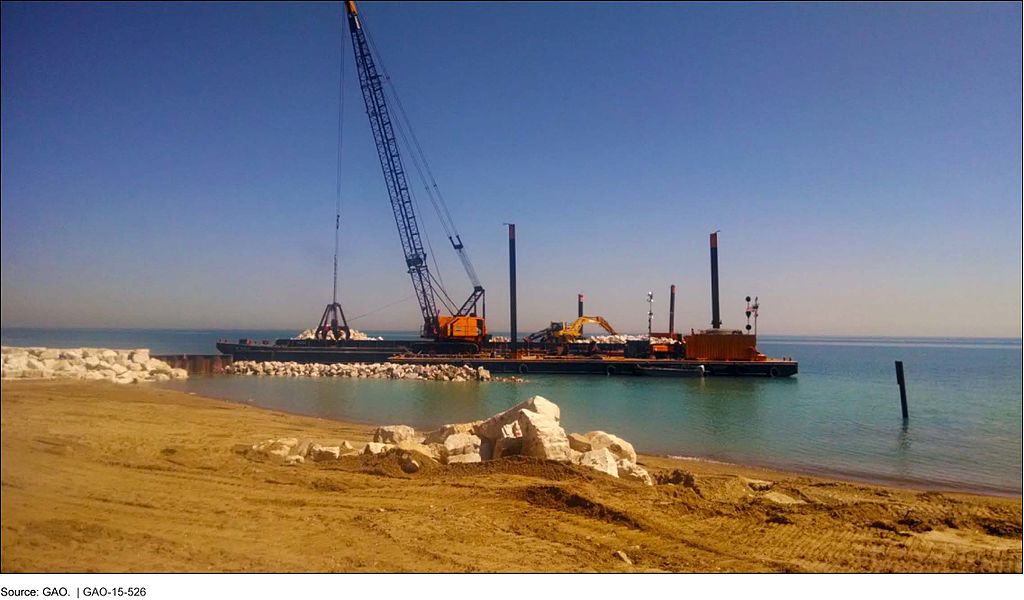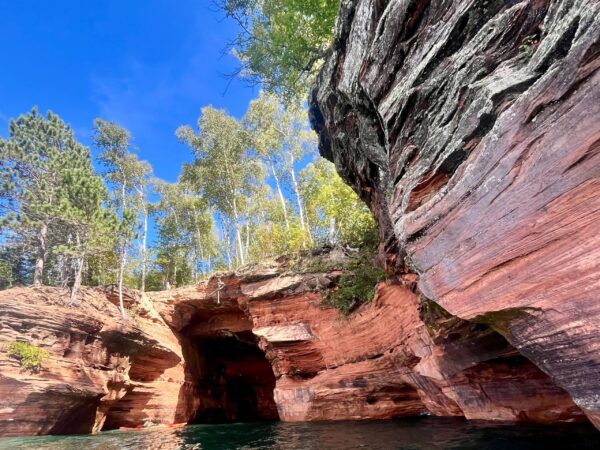
This week, Great Lakes Now begins a series on how the budget cuts proposed by the Trump Administration will affect each of the Great Lakes. The first story in this series focusses on Lake Michigan.
Massive budget cuts proposed by the Trump administration for the Great Lakes are more than a bureaucratic exercise that shifts priorities.
They would have significant impacts on real restorative programs, say the professionals who work to implement them.

Matt Doss, courtesy of Great Lakes Commission
“Cleanup work in 19 Areas of Concern will come to a halt, along with all the environmental and economic benefits that come with it,” says Matt Doss, Policy Director at the Great Lakes Commission.
Areas of Concern are officially designated toxic sites that dot the region and remain from the industrial era in the Great Lakes.
Examples of cleanup works in progress that impact Lake Michigan are the Milwaukee River, The Grand Calumet River in heavily industrialized northwest Indiana, and Muskegon Lake in western Michigan.
Lake Michigan is the only Great Lake within the borders of the United States.
Doss says cleaning up these legacy sites is “expensive and it takes time to investigate and design projects.”
White Lake bordering Lake Michigan took five years to remediate from the time federal money kicked in beginning in 2010 to its removal from the toxic list in 2014.
In addition to the environmental benefits of remediating toxic sites there are economic ones.
Getting Muskegon Lake off the toxic list will help the city of Muskegon continue its nascent economic recovery in the post-industrial era.
Doss says of the 31 toxic sites on the original 1987 U.S. list, “12 have, or will soon have, all their cleanup work completed. That leaves 19 AOCs where additional cleanup work is needed. It’s fair to say that if the federal money goes away, cleanup work in these AOCs will cease.”
According to Doss, approximately $100 million of the federal restoration budget annually goes to the Areas of Concern.
Great Lakes restoration has been funded at $300 million annually with $150 million allocated to the EPA and the balance spread out over several agencies. Clean up of toxic sites is at the core of EPA’s Great Lakes work.
Asian carp and wetlands
While cleanup of the toxic sites is arguably the most important work that would be impacted by cuts to the Great Lakes budget, other programs could be threatened.
The EPA budget to keep Asian carp out of Lake Michigan is $17 million of the $42 million in federal funds allocated to keep the voracious feeders out of the Great Lakes.
The Army Corps of Engineers does the majority of the work on carp by operating the electrical barriers in the Chicago waterways system. But money from the EPA budget supports monitoring and harvesting done by the Illinois Department of Natural Resources and that work “would cease” according to the Great Lakes Commission’s Doss.
Ongoing scientific research is vulnerable to budget cuts too.

Dr. Don Uzarski, courtesy of Central Michigan University
Dr. Don Uzarski at Central Michigan University says cutting the EPA Great Lakes budget could be “devastating” to the school’s wetland research program. Uzarski directs Central’s Institute for Great Lakes Research.
The university has been the recipient of $20 million in federal restoration money to research and monitor coastal wetlands with a surface water connection to the Great Lakes. Part of the goal of the work is to “ensure that restoration approaches are doing what is intended” Uzarski says. The EPA refers to wetlands as “Earth’s kidneys because they provide the same functions, absorbing wastes such as nitrogen and phosphorous.”
Uzarski says his work found that “nitrogen levels in the open water of Lake Michigan are about 10 fold what they should be.” He says nitrogen has been neglected for too long as the emphasis of researchers on water quality has been on phosphorous.
There’s a bonus to the wetland project in addition to the scientific findings, according to Uzarski. The work has “created 150 jobs… and serves the purpose of training the next generation of scientists.”
More than the money
While acknowledging the importance of funding, one policy expert takes a longer view.

Dave Dempsey, courtesy of davedempseybooks.com
Dave Dempsey, in a post on his website, says the Trump administration’s denial of climate change, ordering a review of the clean water rule and putting an Asian carp plan on hold “could lead to the collapse of the Great Lakes as we know them.”
Until the change in administrations, Dempsey was a policy adviser at the International Joint Commission, the U.S. and Canadian agency that advises the governments on trans-border water issues.
“The impacts of these other policies may cost 100 times more to rectify than is being cut from restoration funding” Dempsey wrote.
An EPA website has a list of 939 Great Lakes restoration projects totaling $719 million that have been funded since 2010.
The EPA did not respond to a request to comment on the list.




